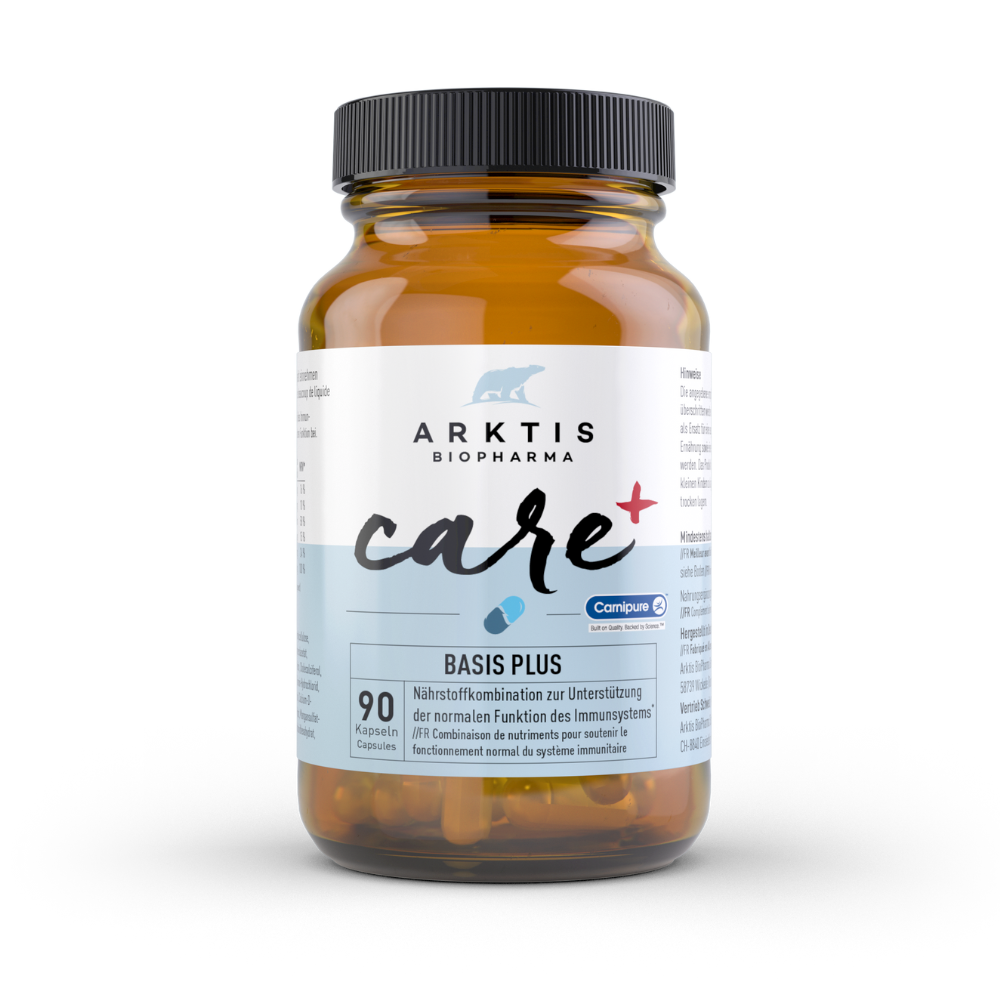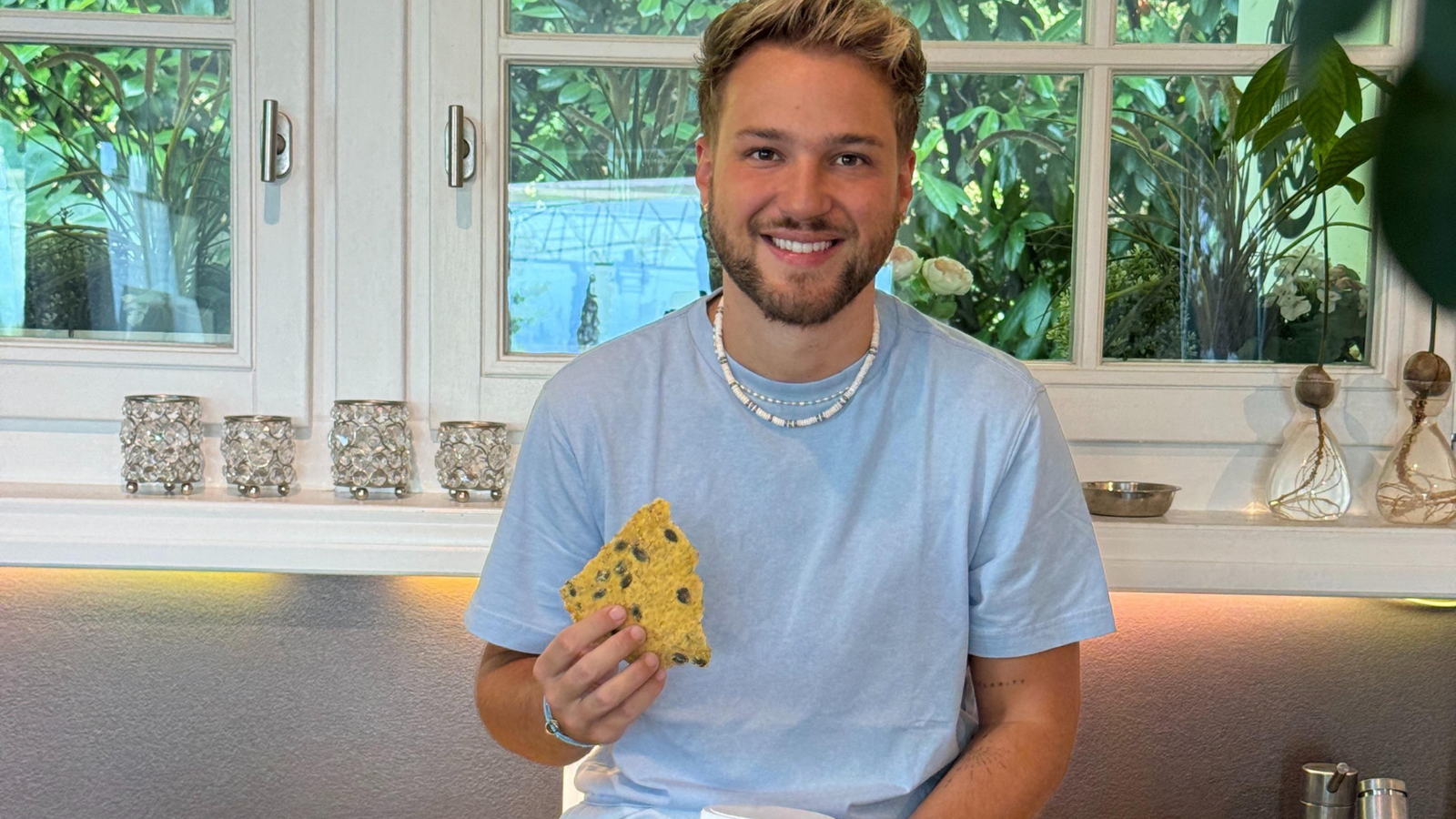You're sitting on the sofa in front of the TV in the evening. An exhausting day is behind you. You're exhausted and looking forward to a new episode of your favorite series.
Your eyes wander to your sideboard drawer. That's where you keep your chocolate and other snacks. "No. I'm going to stick to my guns today," you say to yourself. After all, you've only just given up sugar for a few days. But somehow it feels stupid. Disappointment. A little anger. And a touch of sadness. Now you're also denying yourself your favorite ritual, the sweet reward after a hard day's work... How do you think the story will continue?
Is "eat less sugar" perhaps one of your New Year's resolutions every year? That wouldn't be unusual. Many people repeatedly resolve to finally eat less sweets - and fail again and again.
What may sound surprising to you: the inability to give up sweets is usually not due to a lack of discipline or willpower, but to the wrong strategy.
Giving up sugar: Why it's so difficult

Giving up sugar is difficult in more ways than one. On the one hand, because sugar is actually a kind of
addictive substance and can trigger a physical craving, in the form of hypoglycaemia, for example. A bad mood, ravenous appetite, even a shaky feeling with dizziness and, in extreme cases, the risk of fainting show you that
your body urgently needs sugar right now. All the discipline in the world won't help, so before your eyes go black you'll probably reach for a sweet, a sugary drink, a banana or a coffee with sugar. On the other hand, sugar is also food for the soul, at least that's what we're told. Sweet things are often used as a
reward, to calm or comfort us. If you then use your willpower to give up sugar, but don't have a strategy for rewarding, calming or comforting yourself when you need it (without eating or drinking), you are very likely to relapse at the first or second crisis. This means that if you want to give up sugar, you first need a strategy for managing the physical hunger or physical need for sugar, and secondly a strategy for overcoming the emotional side of the sugar craving.
Why I don't recommend sugar substitutes
I'm often asked: "What do you think of stevia?" or "Is it okay if I drink Coke Zero?". I can only answer that I don't recommend sugar substitutes because:
1.) They don't help me get rid of sweet cravings or sugar addiction.
2.) They are also addictive.
3.) They confuse my body signals and slow down my metabolism (so I gain weight faster!)
The last argument is particularly strong!
In my opinion, if you want to sweeten something at all, you should use sugar, maple syrup or honey (sparingly, of course, and not every day!). This is because these sweeteners are "honest" sweeteners that don't fool the body and confuse the signals. What's more, they don't contain as much fructose as the equally popular agave syrup, which I also don't recommend.
Nevertheless, it can sometimes make sense to give up sweets completely for a while. Not necessarily for the rest of your life, but long enough to break your sugar addiction.
Your body craves sweets
In this article, I will give you tips on how to eliminate the physical causes of your sugar cravings.
To understand how a physical craving for sugar arises, it is important to understand the following mechanism:
Carbohydrates ultimately consist of sugar. All carbohydrates, regardless of whether they taste sweet or not. Carbohydrates include pasta, bread, rice, potatoes, etc. (i.e. all typical "side dishes"), but also vegetables, fruit, sweets and all sweetened drinks, including freshly squeezed juices or smoothies.
Now, of course, we don't have to throw the baby out with the bathwater and immediately give up vegetables and all fruit. The next distinction is crucial: there are so-called fast carbohydrates and so-called slow carbohydrates.
Vegetables and some very watery types of fruit belong to the slow carbohydrates. White flour products, sweets, juices and low-water fruit such as bananas or dried fruit are fast carbohydrates.
Put simply, fast carbohydrates are quickly converted into sugar. This causes your blood sugar level to rise quickly and steeply. High sugar levels cause your body to produce a lot of insulin to lower the sugar level again. And all that insulin then brings your sugar level down again very quickly, often even below the initial level.
And how do you feel when your sugar level is low?
Exactly. Shaky, bad-tempered and hungry. You need new sugar immediately to feel good again.
Avoid hypoglycaemia
To prevent your sugar levels from shooting up too quickly and too high, it is important to eat slow carbohydrates instead of fast carbohydrates.

If your sugar levels rise slowly, only a little insulin is produced as a result and the sugar levels are slowly reduced again over many hours, then you will be balanced, in a good mood, able to concentrate and, above all, full the whole time. Doesn't that sound good?
The following tips should help you to follow exactly this strategy. And don't be fooled by the simplicity of these tips - 95% of our customers don't use a single one of them before they come to us!
Tips to keep your sugar levels rising slowly
Tip 1: Drink water
Drinks are a particularly often forgotten source of fast sugars. And because they don't contain any slowing fibre and the sugar is already present in dissolved form, these sugars are absorbed particularly quickly.
You should also avoid supposedly healthy drinks such as juices (including freshly squeezed ones), spritzers, smoothies, homemade syrups and iced tea if you want to get rid of cravings for sweets.
This doesn't mean that you should never drink these things again. But to get rid of cravings, you should first give it up completely.
Don't forget: drinking water is the most natural thing in the world. The argument "I just don't like the taste of water" doesn't work for me. We die without water. And the body needs pure water to maintain all its functions. If you constantly load it with liquid from which it first has to laboriously filter out the water, then you shouldn't be surprised if you become listless, bad-tempered or even ill.
Tip 2: Eat breakfast - without sugar
You can't imagine how many people tell me that they skip breakfast. And when I ask, they remember that they eat a pastry from the bakery, sweetened yogurt or muesli by 10 a.m. at the latest. This means that a rapid increase in sugar and the resulting sweet cravings in the afternoon are already pre-programmed.
But even if you have breakfast in the morning and eat things like cornflakes with milk, bread rolls with jam and orange juice or a raisin bun on the way to work, you will soon be hungry for sweets again.
The way the day starts is the way it continues.
That's why I advise you to eat low-sugar, protein- and fat-rich breakfast options in the morning, such as Greek yoghurt with coconut flakes and an apple, scrambled eggs with mushrooms and zucchinis, chia muesli or even a vegetable soup with some chicken in it.
Be creative. And try new things until you have variations that taste good and keep you full for a long time. And you'll see that it's not that difficult to find a tasty, sugar-free breakfast.
If you keep your sugar level low from the start, you'll be full until lunchtime or make better food choices at lunch.
If you already eat a healthy, low-sugar diet and simply aren't hungry in the morning and feel fit and productive without food, then there's nothing to stop you from eating for the first time at lunchtime.
Tip 3: Season your food

Are you one of those people who think that healthy food should only be steamed and preferably not seasoned because salt is unhealthy, fat should be avoided anyway and you don't know what else is in spices?
Forget that immediately! Your food has to taste good! If your food tastes boring, your body will rebel and demand something else that tastes interesting. And dessert always tastes interesting!
So: Use high-quality rock salt or Himalayan salt for seasoning and then alternate with various herbs (fresh or dried), pure spices such as cumin, paprika powder, freshly ground pepper or a good curry mix without maltodextrin and other additives.
Tip 4: Use good fats
Fat tastes delicious and fills you up. And fat has quite wrongly been given a bad reputation. However, as with almost everything, it depends on the quality. The fats I recommend are mainly cold-pressed coconut oil, ghee, butter from grass-fed cows (e.g. Demeter), cold-pressed olive oil or rapeseed oil.
The good fats not only help you to burn fat, feel full and absorb fat-soluble vitamins, they are also important for your gut and brain.
Of course, you shouldn't overdo it with the quantity, but that rarely happens anyway, because you can't really overeat on fat. And you shouldn't eat fast carbohydrates in addition to fat. Which brings us to the last tip.
Tip 5: Eat fewer fast carbohydrates
As you can see, I specifically wrote fewer. You can also leave them out completely. But if you're not prepared to give up things like pasta, white rice or your banana completely, then I recommend that you simply reduce them drastically.
I would leave them out completely in the morning if you want to get rid of your sweet tooth, but at main meals you can simply have lots of vegetables and few fast carbohydrates, for example a handful as a side dish. Or a small banana for dessert. However, you should make sure that you are still full, satisfied and productive for four to five hours after your meal.
For all those who prefer listening to reading, I recommend my popular Darmglück podcast. With lots of exciting health topics, tips and tricks for a healthy lifestyle in everyday life and a balanced diet. Listen to episode 3 "Sugar: friend or foe?" now:
[g_podcast id="6961394"]
Giving up sugar: More tips on how you can do it
I recommend you take "inventory" and monitor how much sugar you're eating at all right now. The following tips will also help you to avoid sugar in your everyday life and go on a sugar diet:
1.) Use spices such as cinnamon or vanilla in desserts or coffee/tea, as they give the impression of sweetness.
2.) Nuts, for example in the form of almond butter, coconut milk or as a muesli mix, taste slightly sweet and help you to satisfy the craving for sweet things without sugar.
3.) Use sweet root vegetables or sweet potatoes, as these already taste sweet (especially if they have been baked in the oven). This may well mean that your sweet tooth is already satisfied with the main meal and you won't "need" anything sweet afterwards.
4.) Use a fruit for dessert too, then you won't need any extra sugar, such as in this Chia Pudding Coconut-Mango
5.) Get our "Süsshunger-adé Bundle". The included products Galactose, Bitter and Grow will support you optimally in your project.

Feel free to write in the comments how you liked the article, what questions came to your mind or what experience you personally have had with sugar reduction. It's personal stories like these that are so helpful to other readers!
















